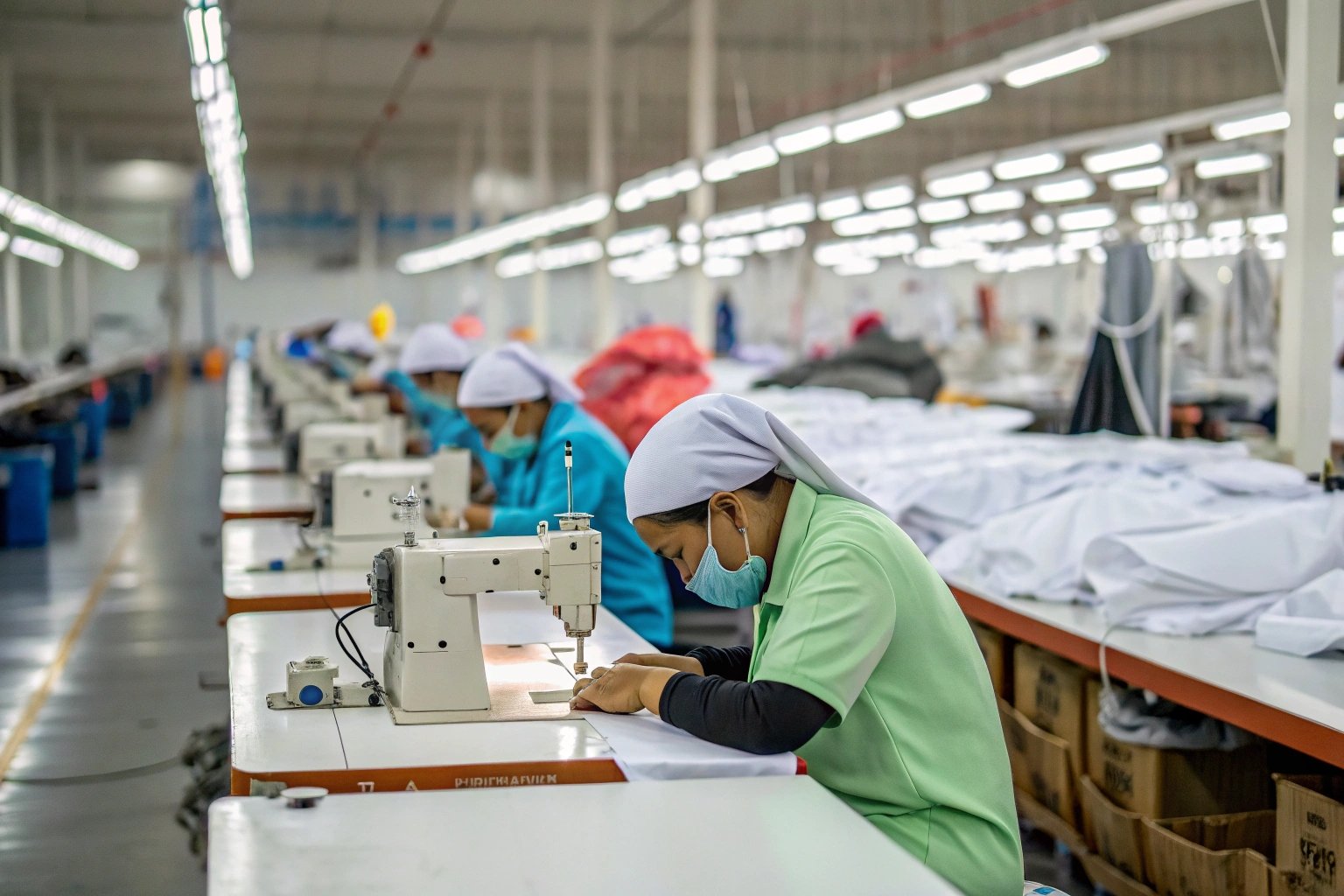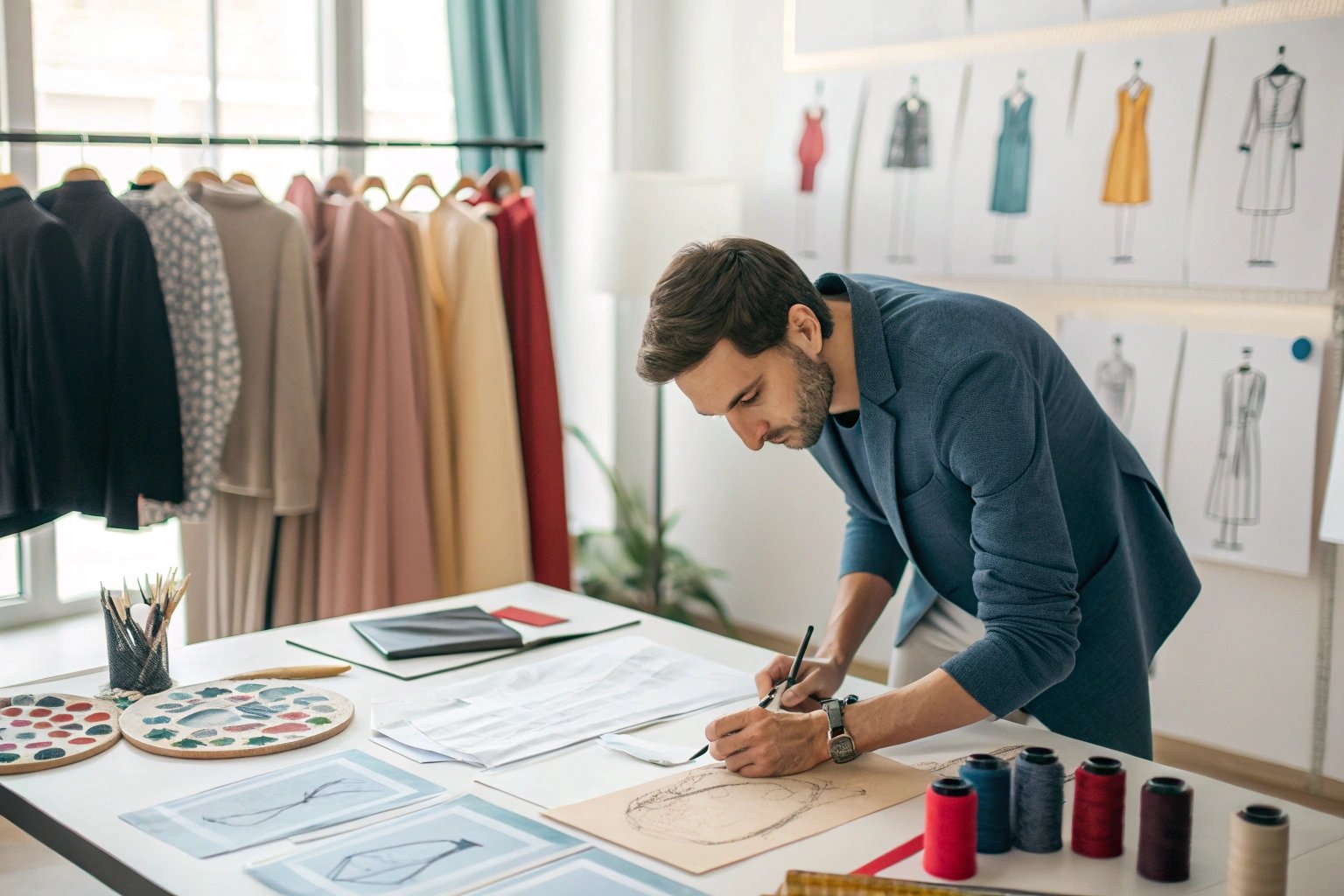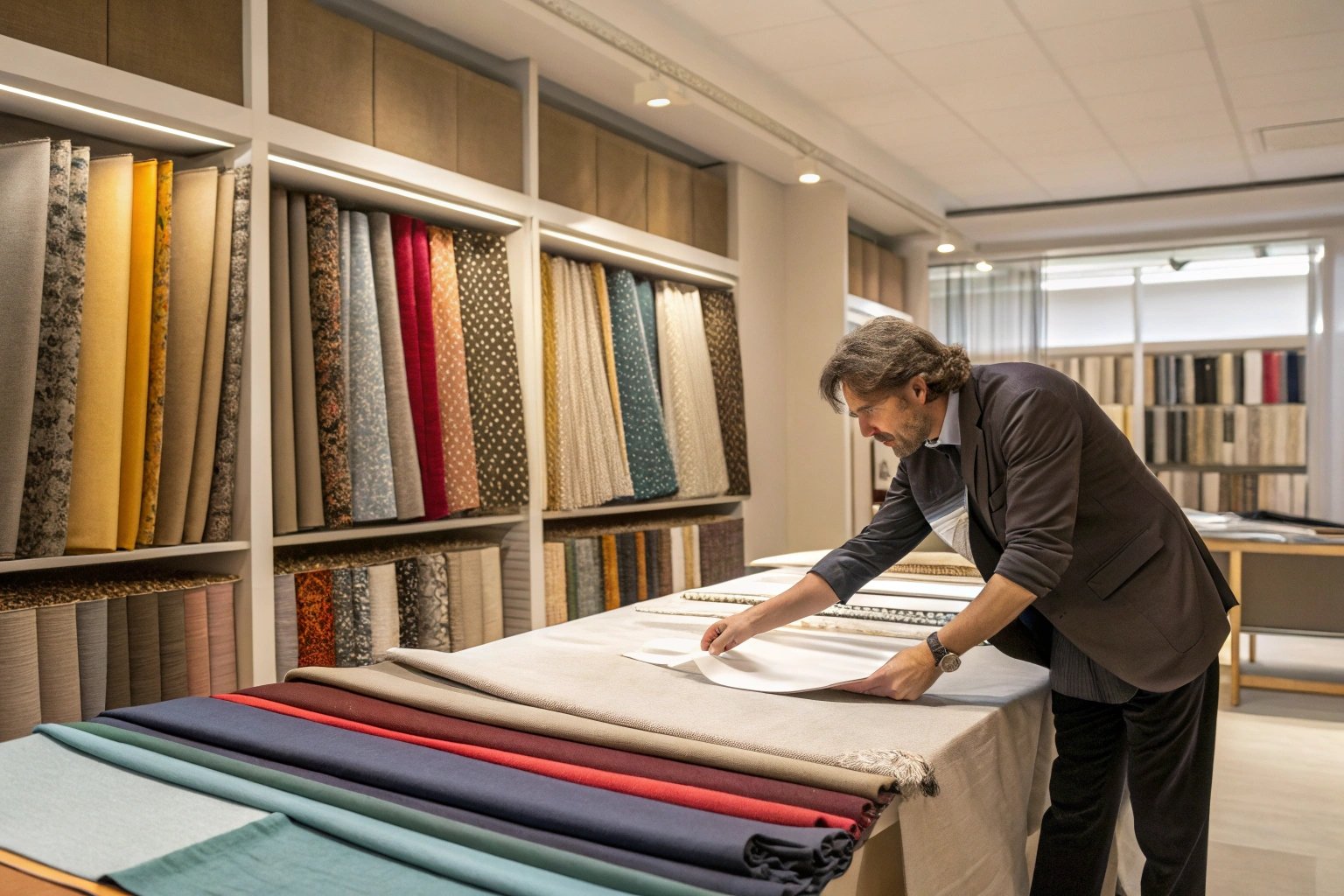The garment manufacturing process involves multiple stages that take raw materials through several transformations until a finished product is ready for sale. Each step plays a crucial role in determining the quality, fit, and functionality of the garment. From design conception to final inspection, the journey of fabric to fashion is an intricate process.

Understanding the garment manufacturing process is essential for ensuring quality production, reducing costs, and meeting consumer demands. In this guide, we’ll break down the steps of garment manufacturing and explain the critical stages involved in creating a finished product.
What is the process sequence in garment manufacturing?
The garment manufacturing process follows a systematic sequence, where each step builds upon the previous one to ensure the creation of a high-quality product. Here is an overview of the general sequence in garment manufacturing:
Design and Conceptualization
The first step in garment manufacturing is the design phase, where creative ideas are translated into visual concepts. Designers consider current fashion trends, target audience preferences, and fabric options to create designs that are both functional and stylish.

Why It’s Great: This stage is where the foundation for the garment is laid, allowing designers to explore different patterns, colors, and shapes that appeal to the target market.
Pattern Making and Grading
Once the design is finalized, the next step is to create a pattern. Pattern makers draw out the garment pieces in detail, taking into account measurements and construction techniques. Pattern grading is the process of adjusting the pattern to create different sizes.
Why It’s Great: Accurate patterns ensure the correct fit and proportions for the garment. Grading is crucial for making sure that a range of sizes fits properly.
Sample Making
A sample of the garment is created from the pattern, allowing designers and manufacturers to see how the garment will fit, look, and behave with the selected fabric.
Why It’s Great: Sample making allows for testing and fine-tuning before mass production begins. It helps identify any issues with fit, design, or fabric that could be problematic in production.
Fabric Sourcing and Procurement

After the design and pattern are finalized, the next step is sourcing the fabric. Fabrics are selected based on the design requirements, such as texture, weight, and color. The fabric must meet quality standards and be durable enough to withstand the garment’s use.
Why It’s Great: Fabric choice has a significant impact on the overall look and feel of the garment. Sourcing the right fabric ensures that the finished product meets customer expectations in terms of quality and comfort.
Cutting
The fabric is then cut according to the patterns, using precision techniques to ensure that each piece is accurately shaped and sized. The cutting process can be done manually or using automated machines, depending on the scale of production.
Why It’s Great: Precise cutting reduces waste and ensures that the garment pieces align perfectly during assembly, leading to a better-quality end product.
Sewing and Assembly
Sewing is the process of joining fabric pieces together. Skilled workers sew the garment together, following the patterns and design specifications. This stage may include adding details like buttons, zippers, or embroidery.
Why It’s Great: Quality sewing ensures that the garment is durable, fits properly, and meets the design standards set by the brand.
Finishing
Finishing involves the final touches on the garment, such as hemming, adding labels, pressing, and any other finishing processes that improve the garment’s appearance and functionality. It may also include washing or dyeing to achieve the desired look and feel.
Why It’s Great: Finishing helps give the garment its final form, adding polish and ensuring it’s ready for wear.
Quality Control and Inspection
Before the garment is shipped, it undergoes a thorough quality control process. Inspectors check for any defects in stitching, fabric, and overall construction. The garment is also checked to ensure it meets size specifications and other quality standards.
Why It’s Great: Quality control ensures that only well-made garments make it to customers, reducing returns and increasing customer satisfaction.
Packaging and Shipping
The final step involves packaging the garments in appropriate materials to protect them during shipping. Once packaged, the garments are shipped to stores or directly to customers.
Why It’s Great: Proper packaging prevents damage during transit, ensuring that the garment arrives in perfect condition.
What is the processing of raw materials into finished products manufacturing?
The processing of raw materials into finished products involves converting basic fabrics into wearable garments through various stages. The journey from raw material to finished product is a blend of design, technology, and craftsmanship. Here’s a quick look at the stages involved in processing raw materials into finished clothing:
- Raw Material Sourcing – This is the procurement of raw materials such as cotton, wool, synthetic fibers, or natural fibers.
- Spinning and Weaving – Raw fibers are spun into yarn, and then yarns are woven or knitted to create fabric.
- Dyeing and Printing – The fabric is dyed and printed to achieve the desired color and pattern.
- Fabric Preparation – Pre-treatment of fabrics to improve their strength, texture, and appearance.
- Cutting, Sewing, and Assembling – Fabric is cut and sewn into garment pieces, following the design patterns.
- Finishing and Inspection – After sewing, finishing processes such as pressing, adding buttons or zippers, and quality inspections are performed to ensure the garment meets the required standards.
- Packaging and Shipping – Finally, the finished garments are packaged and shipped to retail locations or directly to consumers.
What are the 8 stages in garment construction?
The 8 stages in garment construction include:
- Design and Conceptualization
- Pattern Making and Grading
- Sample Making
- Fabric Sourcing and Procurement
- Cutting
- Sewing and Assembly
- Finishing
- Quality Control and Inspection
Each of these stages is crucial for creating a high-quality garment that meets the design specifications and customer expectations.
What are the finishing processes for garment construction?
Finishing processes play a vital role in enhancing the look, feel, and durability of the garment. Some common finishing processes include:
- Pressing and Ironing – To ensure the garment is wrinkle-free and has a crisp appearance.
- Washing – To soften the fabric and give it a pre-worn look.
- Dyeing and Printing – Final color adjustments or patterns are applied.
- Adding Details – Such as buttons, zippers, tags, or embroidery.
- Pre-shrinking – To ensure that the garment does not shrink after washing.
- Garment Labeling – Labels are attached to show the size, care instructions, and branding.
These finishing touches enhance the garment’s quality and ensure it meets the standards expected by consumers.
Conclusion
The garment manufacturing process is a detailed and intricate journey that begins with raw materials and ends with a finished product ready for retail. Every stage, from design to final inspection, plays a critical role in ensuring the garment meets the required quality, fit, and aesthetic standards. Understanding the steps involved can help manufacturers streamline their operations, improve product quality, and reduce production costs.
By paying attention to each step of the garment manufacturing process, brands can ensure they produce high-quality, well-designed garments that meet the needs of their customers.

